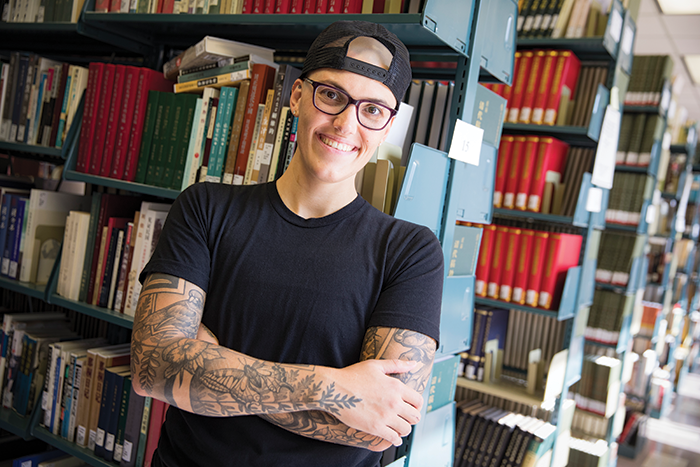“No, Nayla! Look at the picture! That’s not a boy! That’s a girl! That’s glitter!” Korey shouted at his partner as they were reading a book about a boy who likes sparkles. Nayla looked over at me, expecting me to jump in and support her in this conversation. I had been watching the interaction between the partners for a few minutes, knowing it would reach this point.

From a distance I met eyes with Nayla and gave her an eyebrow raise and an encouraging nod. I knew she had the language and skills to handle this on her own. She stared back for a moment, so I nodded again. Her eyes dropped and she took a deep breath. I could tell she was thinking of what her next move would be. As she lifted her gaze to turn back to Korey, a subtle confidence strengthened her posture.
“Anyone can wear sparkles. We can’t assume someone’s gender because they are wearing sparkles. Anyone can be who they want to be. The book is calling him a he/him boy, so he’s a boy and that’s all. It’s not even our job to decide. It’s our job to be respectful.”
With that, Nayla grabbed the book and turned the page. She began reading in a way that signaled the discussion was over. Korey was still for a moment, and then shrugged his shoulders and followed Nayla’s reading. When she finished the page, she glanced back at me. I was still watching. She smiled proudly. I smiled back. They continued to read with no further argument.
In my classroom, the discussions around gender and pronouns begin early and happen often throughout the year. As with many other topics, this is an area where I have received a lot of pushback from caretakers and school personnel. I have been told that third grade is “too young” to be discussing gender and that by teaching about pronouns and gender, I am setting my students up for a world of confusion.
The first time I can remember crying about my gender was in first grade. My pronouns are she/her/hers, but I am someone who is often misgendered and assumed to use he/him/his pronouns. At the beginning of each school year, as I am meeting new students and adults, I am often called “sir” or “mister.” For many of us, waiting to discuss gender is not an option. We are being misgendered now. We are being mistreated now. We are hurting now.
As a teacher, I feel it is important to create opportunities that empower student agency. I want the classroom to be a space where students feel supported in exploring the power of their voices. Likewise, I want students to practice respect and empower each other by listening openly and with empathy. When Nayla hesitated, then reacted with confidence, it was a small but pivotal moment of testing her potential. As I watched Korey listen, I knew he saw it, too.
When these conversations are normalized in the classroom, students are much more equipped with the confidence, language and skills to discuss and solve their own problems. Nayla thought for a moment to compose herself, but she had the words she needed to convey her ideas to Korey in a respectful way.
As I reflect on their interaction, I am proud. I am proud of Nayla for taking a moment and then finding the confidence to use her words and take action. I am proud of Korey for pausing and listening. I am proud of the two students for solving the problem on their own and then continuing to read and work together respectfully. Our students are ready and capable of having these conversations and understanding others with empathy.
No student is too young to learn to be inclusive and respectful of all people.
Share Your Story
We want to hear what motivates you to get up each morning and serve students in our nation's schools.
Send your 600-word submission for the "Why I Teach" column to us here.